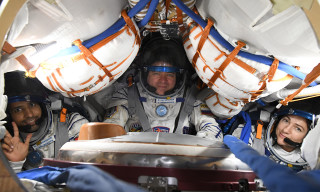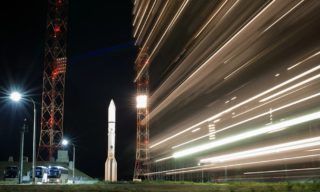Specialists on Baikonur Cosmodrome are preparing two spacecrafts for a launch to the International Space Station (ISS): the Progress MS-28 cargo ship and the Soyuz MS-26 manned spacecraft. The first launch is scheduled for August, and the second – for September. “Progress” is undergoing preflight tests and will spend the next few days in a vacuum chamber. Meanwhile, the “package” of the Soyuz-2.1a launch vehicle has been assembled for the flight with the crew.
The cargo ship “Progress MS-28” is being prepared for the flight to the ISS in the assembly and test building of site 254 of the Baikonur Cosmodrome. In the coming days, it will undergo leak tests using a helium-air medium – for this purpose it was moved to a vacuum chamber.
Last week the spacecraft underwent comprehensive tests, during which specialists checked the readiness of its onboard systems for launch into orbit and docking with the station. Among other things, autonomous tests of radio equipment in an anechoic chamber were conducted. The launch of the Soyuz-2.1a rocket with Progress MS-28 will take place on 15 August as part of the 89th flight to supply the ISS.
The previous cargo spacecraft, Progress MS-27, launched to the ISS on 30 May using a Soyuz-2.1a launch vehicle. It delivered more than 2.5 tonnes of various cargoes, including fuel, equipment, clothing, water, and food, as well as birthday presents for two Russian cosmonauts.
Meanwhile, Baikonur is also continuing preparations for the autumn launch of the Soyuz-2.1a launch vehicle with the Soyuz MS-26 manned spacecraft. Specialists have assembled the “package” of the launch vehicle: the first and second stages, which consist of five blocks – one in the centre and four on the sides. After that, the assembled set was placed in the storage place. Next, the rocket is waiting for pneumatic tests: autonomous and complex tests, after which engineers will perform general assembly.
The launch of the Soyuz MS-26 manned spacecraft is scheduled for 11 September. The crew includes Roscosmos cosmonauts Alexei Ovchinin and Ivan Wagner, as well as NASA astronaut Donald Pettit. Before the autumn “changeover” of Soyuz crews, the ISS orbit was adjusted: it was raised by 3.5 km.



















